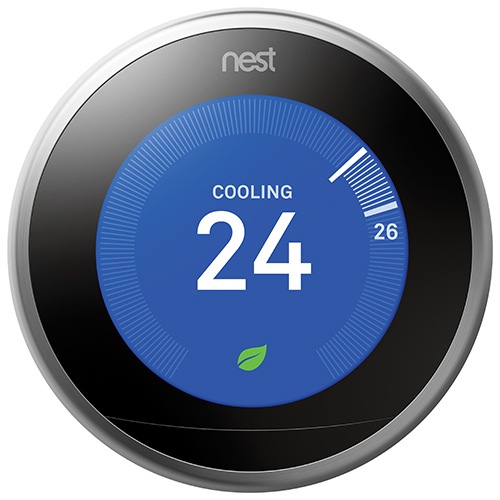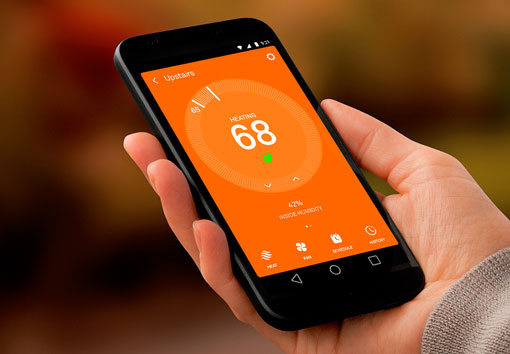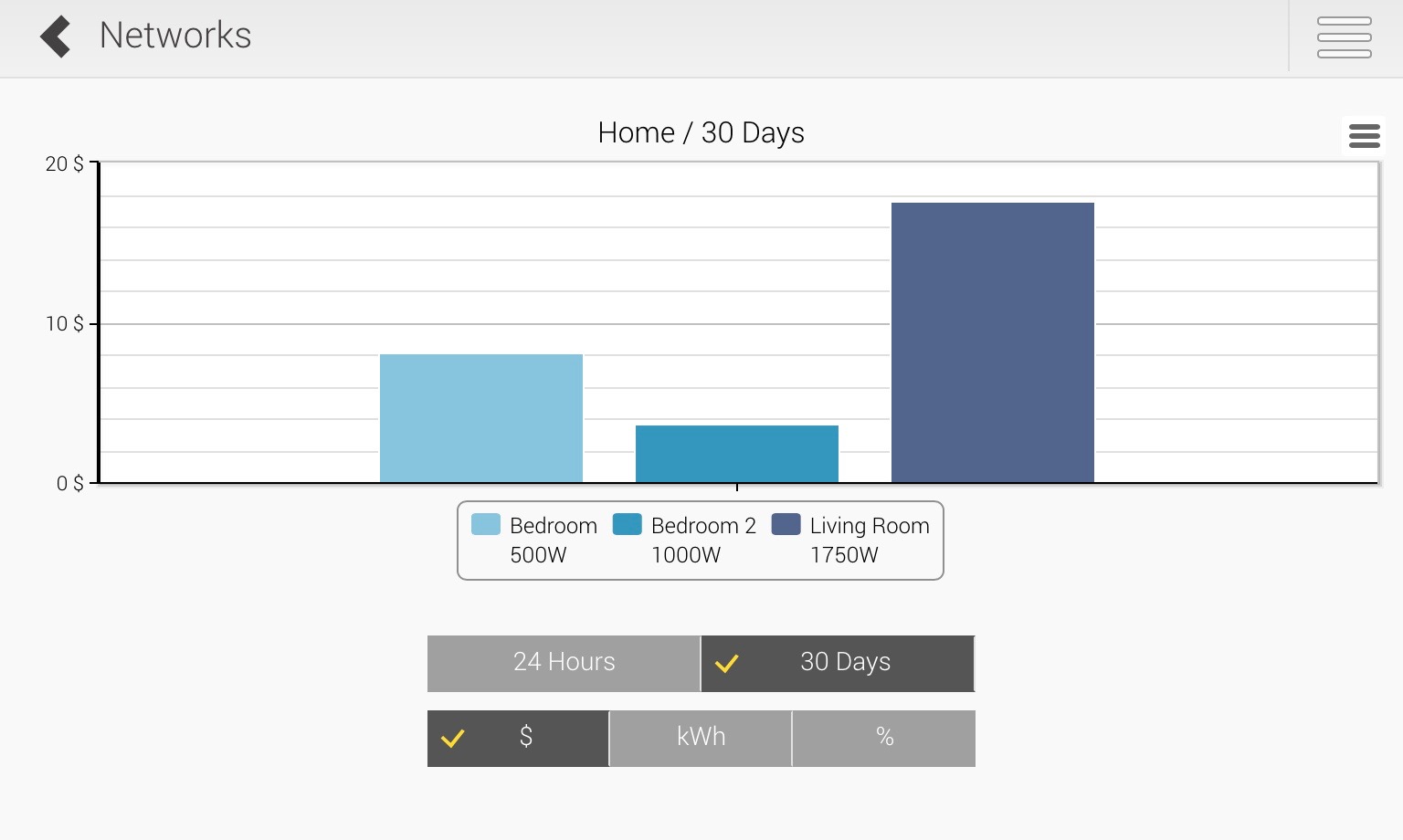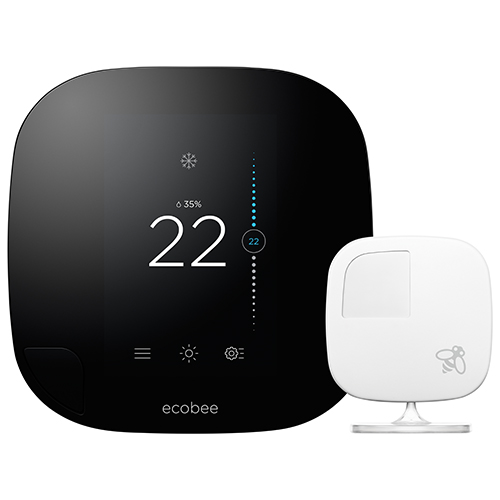 Smart Thermostats are an integral part of the smart home and part of the foundation of the internet of things in your space. They’re convenient, they save energy, and they can actually change the way you live.
Smart Thermostats are an integral part of the smart home and part of the foundation of the internet of things in your space. They’re convenient, they save energy, and they can actually change the way you live.
What is a smart thermostat?
A smart thermostat is like a regular thermostat in that it regulates the temperature of your home by controlling heating and/or cooling appliances. In my home my smart thermostat controls my baseboard heaters (I have one smart thermostat for every room) whereas my parents have a dedicated HVAC system–that’s the difference between living in Vancouver and Ontario–where their thermostat controls their central heating and their air conditioning.
Smart thermostats are generally connected to your home network, and to a cloud server through your home computer. That remote server does a few things for you: it gives you intelligent analysis of your home heating and cooling habits, and it also enables remote control of your system through computers, tablets, and phone apps.
So, in a nutshell; a smart thermostat is a piece of hardware that has built-in software and a connection to the internet to gather data about how you use your home, giving you more control over the climate in your space at all times.
Why do I want one of these things?
There are a number of reasons why you should think about owning a smart thermostat:
 They’re more economical! There’s a whole article coming that’s going to focus on how smart thermostats save you money, but the Cole’s notes of the thing is that you can program your thermostat like a programmable model (I have mine set to drop to 17º when I’m not home and pop back up to 20º when I am. It also does this when I go to bed, heating back up half an hour before I’m supposed to wake up) with the advantage of a system that can react to weather as it’s changing. With a smart system you can have your heat shut off earlier if you know it’s going to warm up, and vice versa with your AC. Keeping your energy consumption strictly monitored by aggressively managing your heating and cooling can save you a lot of money.
They’re more economical! There’s a whole article coming that’s going to focus on how smart thermostats save you money, but the Cole’s notes of the thing is that you can program your thermostat like a programmable model (I have mine set to drop to 17º when I’m not home and pop back up to 20º when I am. It also does this when I go to bed, heating back up half an hour before I’m supposed to wake up) with the advantage of a system that can react to weather as it’s changing. With a smart system you can have your heat shut off earlier if you know it’s going to warm up, and vice versa with your AC. Keeping your energy consumption strictly monitored by aggressively managing your heating and cooling can save you a lot of money.
Control is another big aspect; you can have your system react to the weather as mentioned above, but you can also have it react when events happen: with many models you can have your system shift into “away” mode when you pass a certain geographic point (so, for example, you’ve left for work) or if there’s no one detected in the house based on motion sensors. In addition, smart thermostats have apps that let you take control of your system, adjusting parameters and checking in on the go. My parents have a condo in Florida and they use their EcoBee 3 to check in to make sure the house is warm enough, even in cold snaps, so that they don’t have to worry about coming back to floods and frozen pipes.

Statistics–now this might not appeal to everyone, but personally I love the data that I get from my smart thermostats. I know how long they’re on, what temperature they’re running at, and because it fetches the cost of power from my local utility, I know how much each day costs me. Being able to see data like this has changed how I use my system and has let me be more energy efficient.
Options
There are two big names that I’ve had experience with in HVAC Smart Thermostats, and one name for baseboard heaters. I’ve installed a number of NEST Thermostats for friends and family over the past few years, and they’re great for anyone in the Google ecosystem (Android users, listen up…but iOS users, don’t worry, you’re not left out in the cold!). NEST has a full line of products available, including their smoke alarms (which I found to be smarter than my old smoke alarm by a long shot, far fewer false alarms) and cameras like the DropCam for security. They also have a great API that can tie into dozens of other products including things like garage door openers. It’s a very mature ecosystem.
 The EcoBee3 is the model I chose for my parent’s home in Ontario; they have a sizeable place, they’re not really into micromanaging things with a smartphone, and they wanted something that would be able to heat their home evenly. The EcoBee 3 comes with additional wireless sensors that you can place around your home; this tells the main unit about the temperature in the whole house; it’s a very handy thing to have considering that their gas fireplace was installed right next to the thermostat, ensuring that if they enjoyed the fire, the rest of the house would be chilly. Since installing the EcoBee 3 last October their bill has gone down and their satisfaction with their home has gone up.
The EcoBee3 is the model I chose for my parent’s home in Ontario; they have a sizeable place, they’re not really into micromanaging things with a smartphone, and they wanted something that would be able to heat their home evenly. The EcoBee 3 comes with additional wireless sensors that you can place around your home; this tells the main unit about the temperature in the whole house; it’s a very handy thing to have considering that their gas fireplace was installed right next to the thermostat, ensuring that if they enjoyed the fire, the rest of the house would be chilly. Since installing the EcoBee 3 last October their bill has gone down and their satisfaction with their home has gone up.
For those with baseboard heating: Sinopé! I installed these last year and was unsure as to how effective they would be, but to be frank it’s one of the best upgrades I’ve made to my home. Being able to see how warm it is throughout the house at a glance is great. While it doesn’t have some of the enhanced smart features like being tied into IFTTT (like the NEST and EcoBee 3) it’s a step above programmable models and has saved me about a third of the cost of the unit so far this year.
The Final Word
Unless you’ve made the shift to a smart thermostat, it’s my opinion that you’re probably paying too much for your home climate control, you don’t know enough about what’s going on in your house, and that your heating and cooling system is costing you money. So check them out and see if there’s a model that’s right for you.



